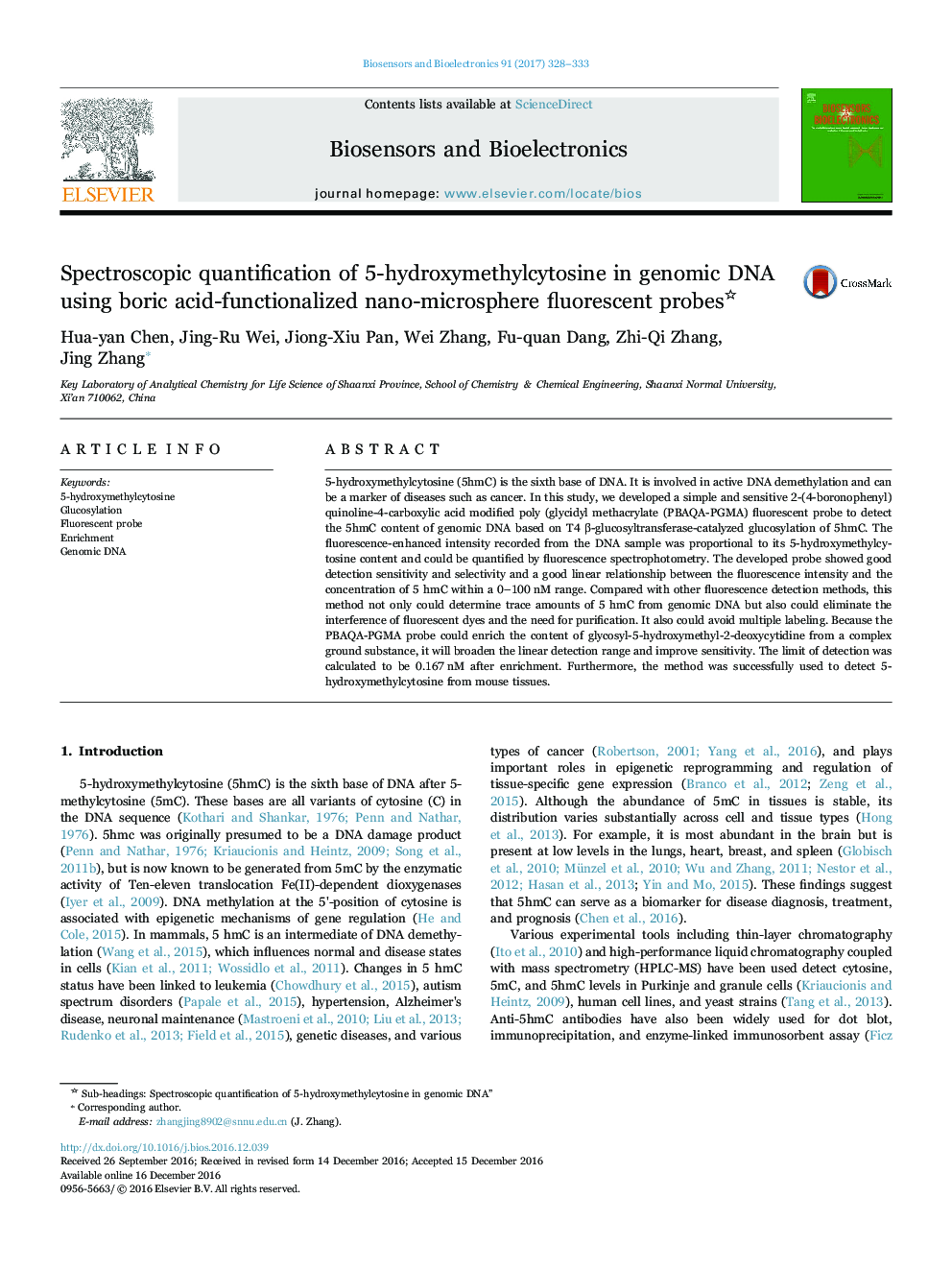| Article ID | Journal | Published Year | Pages | File Type |
|---|---|---|---|---|
| 5031167 | Biosensors and Bioelectronics | 2017 | 6 Pages |
Abstract
5-hydroxymethylcytosine (5hmC) is the sixth base of DNA. It is involved in active DNA demethylation and can be a marker of diseases such as cancer. In this study, we developed a simple and sensitive 2-(4-boronophenyl)quinoline-4-carboxylic acid modified poly (glycidyl methacrylate (PBAQA-PGMA) fluorescent probe to detect the 5hmC content of genomic DNA based on T4 β-glucosyltransferase-catalyzed glucosylation of 5hmC. The fluorescence-enhanced intensity recorded from the DNA sample was proportional to its 5-hydroxymethylcytosine content and could be quantified by fluorescence spectrophotometry. The developed probe showed good detection sensitivity and selectivity and a good linear relationship between the fluorescence intensity and the concentration of 5 hmC within a 0-100 nM range. Compared with other fluorescence detection methods, this method not only could determine trace amounts of 5 hmC from genomic DNA but also could eliminate the interference of fluorescent dyes and the need for purification. It also could avoid multiple labeling. Because the PBAQA-PGMA probe could enrich the content of glycosyl-5-hydroxymethyl-2-deoxycytidine from a complex ground substance, it will broaden the linear detection range and improve sensitivity. The limit of detection was calculated to be 0.167 nM after enrichment. Furthermore, the method was successfully used to detect 5-hydroxymethylcytosine from mouse tissues.
Related Topics
Physical Sciences and Engineering
Chemistry
Analytical Chemistry
Authors
Hua-yan Chen, Jing-Ru Wei, Jiong-Xiu Pan, Wei Zhang, Fu-quan Dang, Zhi-Qi Zhang, Jing Zhang,
